Author: Yanlin
In the past year, the large model field has mainly seen two hotspots: one is LLM (Large Language Models), which is innovating at an almost monthly pace, with concerns focused on effectiveness and cost. The other is AI Agents, where attempts are being made to solve application problems across various fields, with an emphasis on scenarios and competitiveness. Below, we will focus on sharing trends and practices in AI Agents.
The evolution of AI Agents is accelerating from single-agent to multi-agent systems. Data-centric intelligent platform mechanisms will speed up their formation. Building high-quality data and continuously optimizing data quality capabilities will be crucial for the success of these agents.
An AI Agent is an intelligent entity capable of perceiving the environment, making autonomous decisions, and executing actions. It has the ability to gradually complete goals through independent thinking and tool invocation.
Because LLMs only simulate the neural reasoning processes in the human brain, carrying out specific tasks in the real world still requires a sensory system similar to human senses (hearing, touch, taste, etc.), supported by memory and experience to aid decision-making, ultimately leading to action.
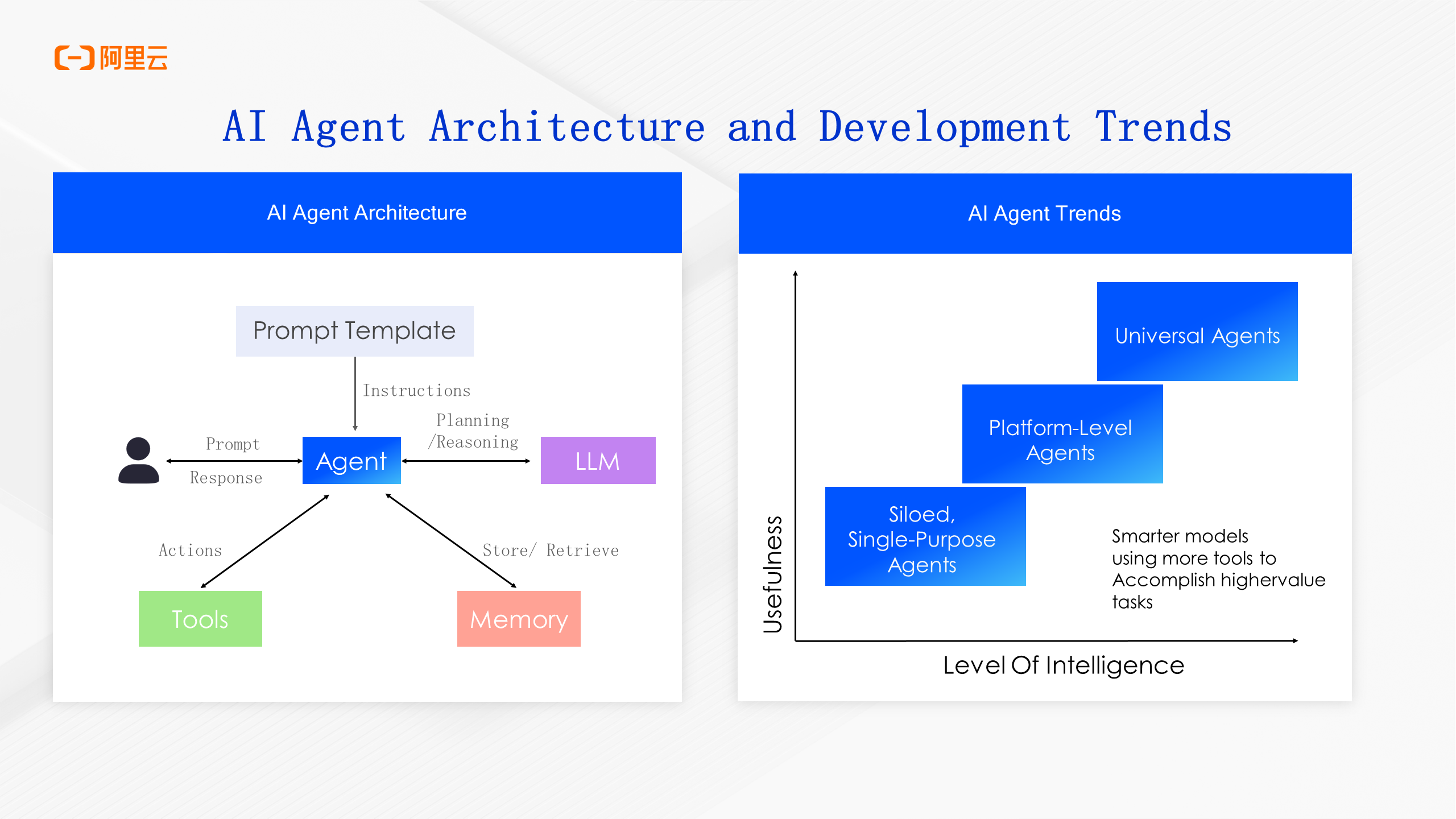
In the past year, many have been exploring fixed, single-task agents to solve specific small problems. Starting this year, efforts have shifted towards building agent platforms and paradigms to enhance multi-agent collaboration, orchestration, and optimization of data quality systems. The ultimate goal is to develop a super agent capable of one-stop solutions for all problems, marking the true arrival of general artificial intelligence (AGI).
Considering generality and specificity, a balance is often needed, and cost effectiveness must also be balanced. The arrival of AGI will still take some time; therefore, we judge that the main future direction will be a data-centric, multi-agent collaboration model.
During the construction of AI Agents, the first question we consider is: what is the core competitiveness of an intelligent agent?
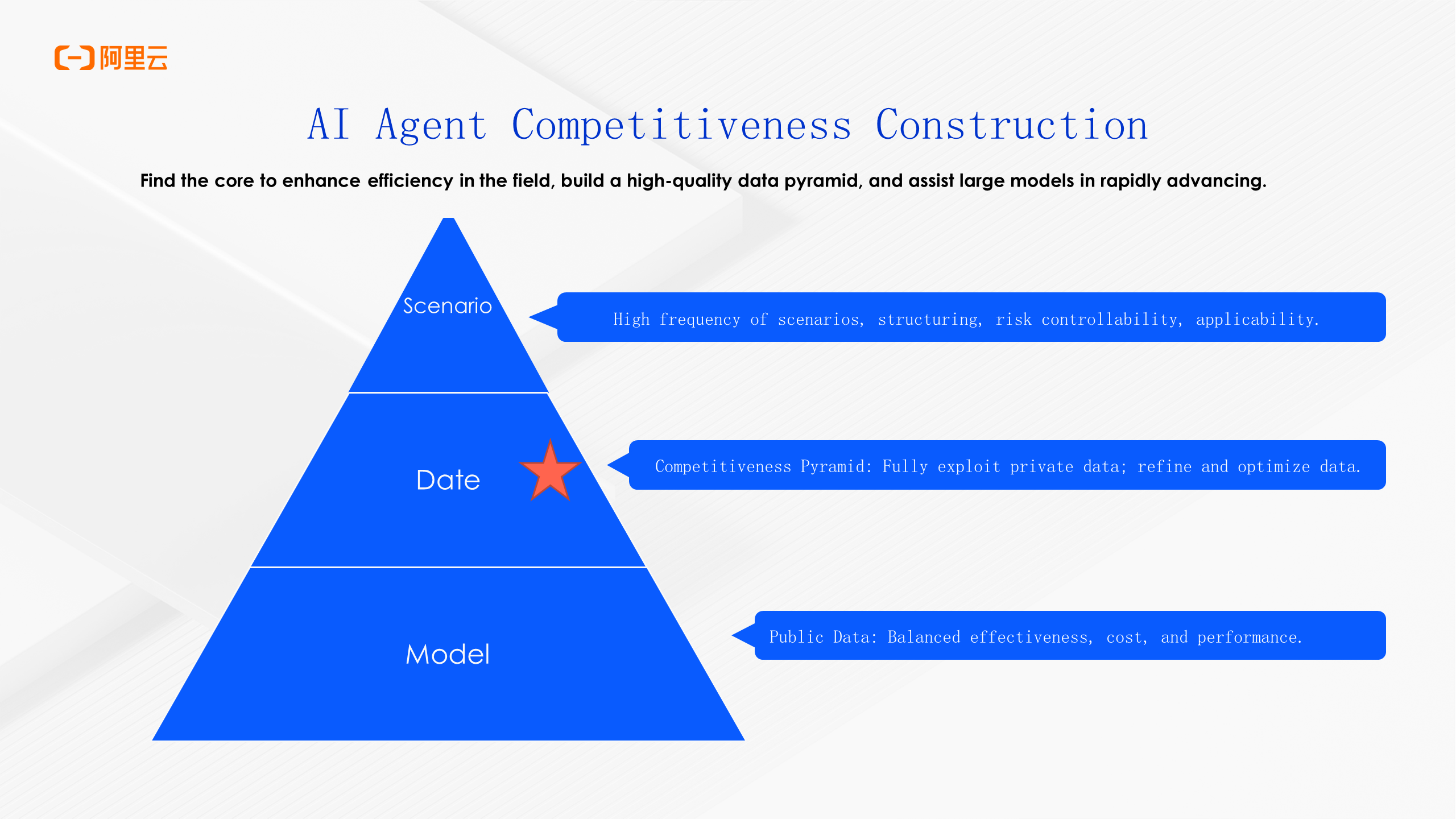
We believe that a combination of model + data + scenarios are the three key points for building the competitiveness of AI products.
Everyone knows data is a core competitiveness. So how do we create high-quality data in our respective fields?
First, each application should collect and consolidate personalized and specialized data from customers. Secondly, each field has its own specialized data and SOPs, which can effectively solve customer problems when combined with customer data.
Once we have structured an AI Agent for release to customers, we need to prepare data assessment sets to meet customer SLA certainty requirements. After going online, we need to collect customer feedback data and use it to analyze and optimize our industry data, tool sets, and scenarios.
By continuously optimizing the private high-quality data system on the right through the evaluation data system on the left, we can achieve high-quality alignment between customer demands and data. Thus, the flywheel keeps turning, continuously enhancing the enterprise's competitiveness!
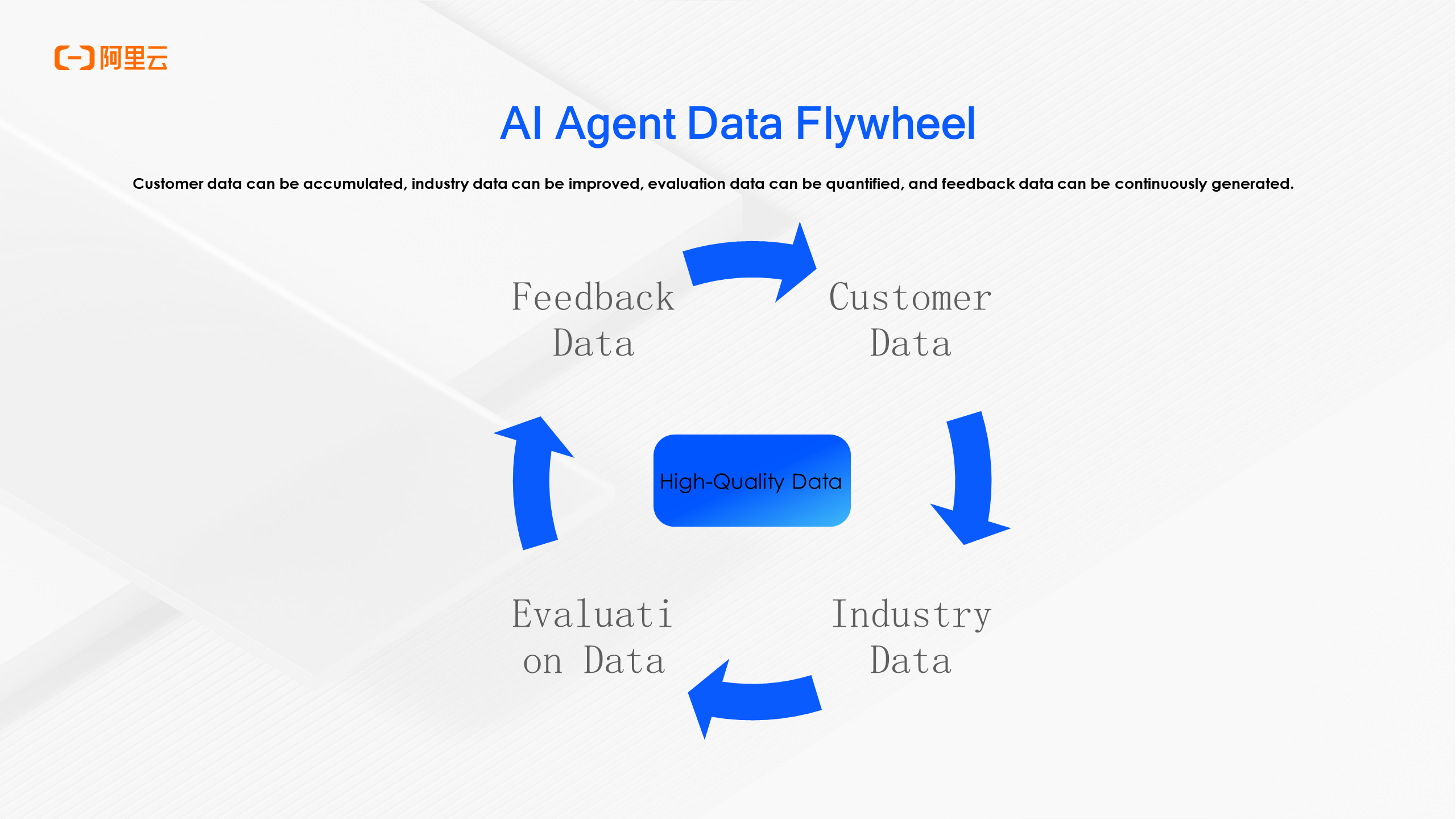
What system will carry and circulate the above four types of data?
Our answer is to construct a data-centric intelligent agent platform.
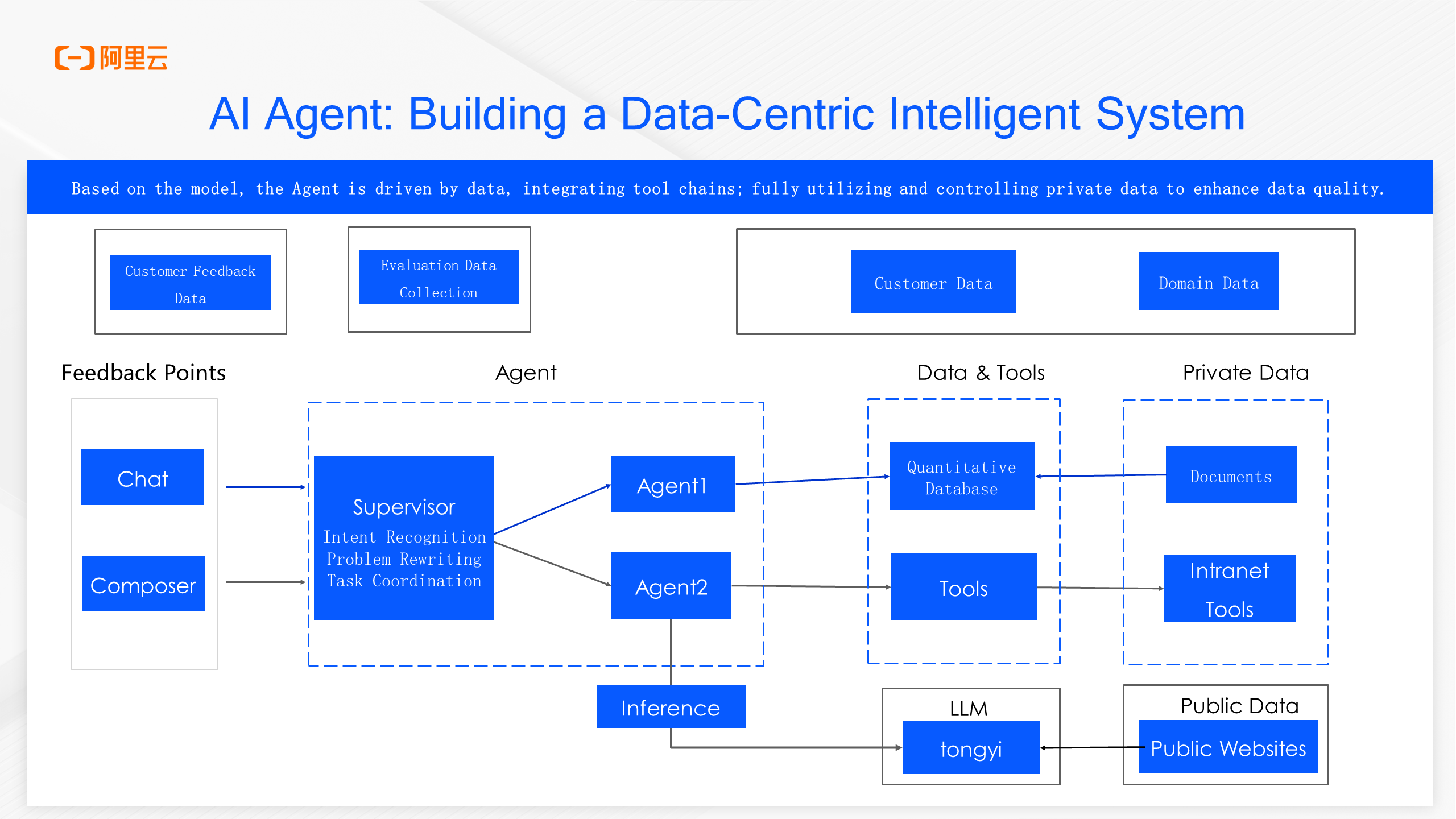
How do we build a multi-agent architecture?
Alibaba introduced the Spring-AI-Alibaba framework and ecosystem toolset at last year's Yunqi Conference to assist enterprises in constructing intelligent agents.

Through the above introduction, we can see the significant implications and trends of building a data-centric intelligent agent. Next, we will share Alibaba's best practices in implementing AI Agents as a reference to accelerate the arrival of the AI era.
AI Agent Practice (Higress: One-Click Integration of Multiple Data Sources)
Higress is Alibaba's open-source AI-native API gateway, equipped with the most comprehensive AI ecosystem plugins, capable of helping developers integrate multiple data sources with a single click.
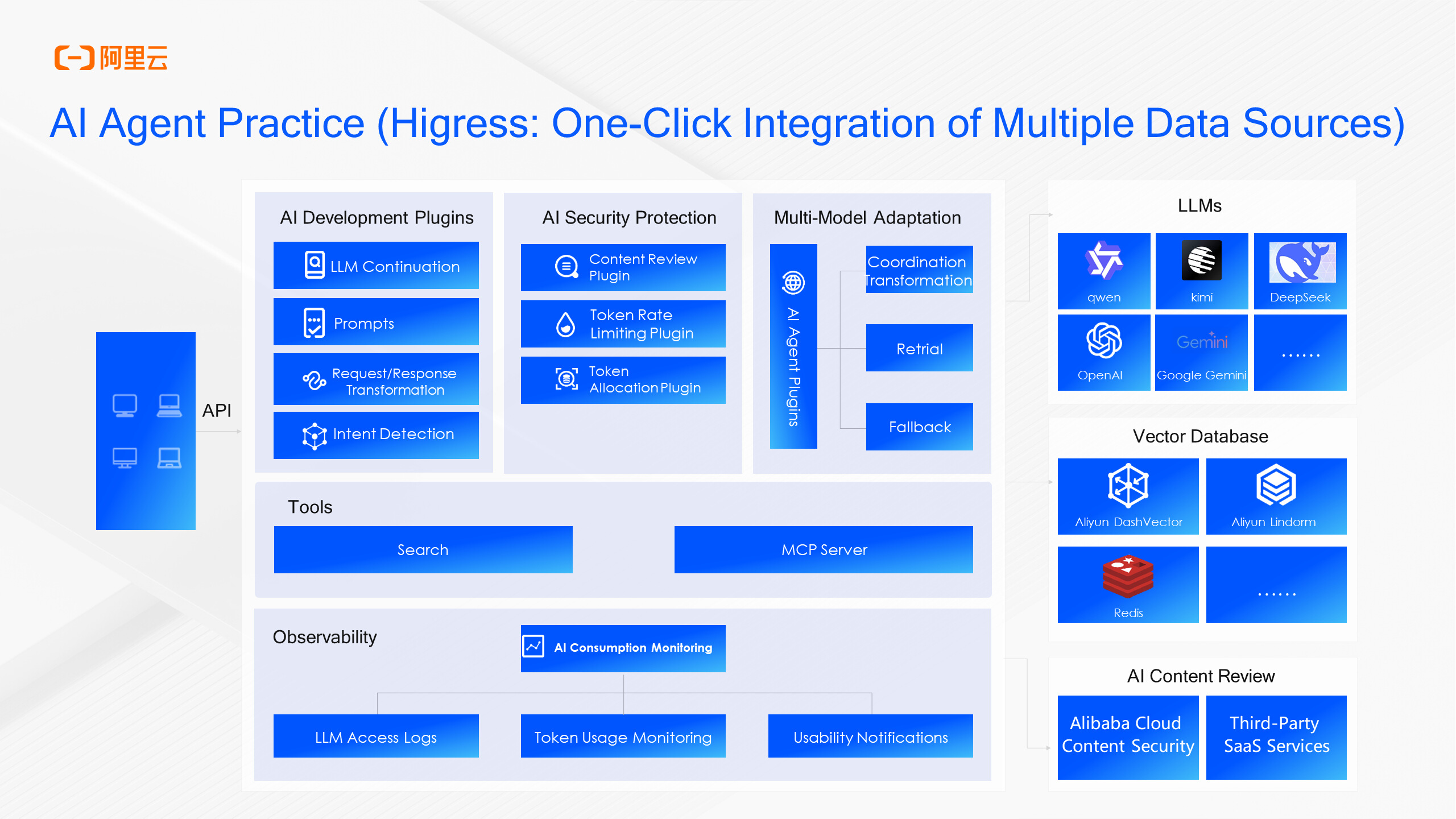
Based on the Otel observation system, we can automatically analyze the effectiveness of reasoning processes and recall results. If performance is subpar, we can trace the entire customer search and reasoning processes through an end-to-end tracking system to analyze whether the issue lies with the knowledge base, RAG, or toolset, thereby enhancing the optimization efficiency of the data.

The agent comprises a multitude of prompt words and algorithms; through Nacos, we can enable dynamic real-time pushing, obtaining timely optimization effects. If concerns arise post-launch regarding prompt changes, we can use gray configuration to gradually monitor the prompt data optimization effects.

Both system data and customer data are constantly updated. We can sync change events and data in real-time through RocketMQ, ensuring that the most timely data and effects are available for each inference.

Using the above technical system, we have established an intelligent diagnostic system through open-source AI experts alongside Alibaba Cloud's native API gateway and Microservices Engine (MSE), solving over 95% of consulting issues and over 85% of anomalies.

By leveraging Higress to shield underlying models and tool systems, we build secure data links and account security systems. The Spring-AI-Alibaba helps construct agents and orchestration, offering chat modes for consultation issues and composer modes for addressing customer anomalies.
DeepSeek has become popular; those who have used it know that the connected version is the true full-strength variant.
A large number of customers are currently using Higress for one-click integration with DeepSeek and connected capabilities, merging Quark search data for optimal experiences. With Higress, we can enable end-to-end TLS on the model access chain to protect data security. Content safety measures address data compliance and security issues, and we can manage API keys centrally to enhance concurrency, provide internal API keys to agents, prevent API key leakage risks, and control traffic and quotas based on internal API keys to avert costly token calls due to code bugs.

For more discussions, feel free to join the group!

The Secret of Performance Improvement of Logtail's Multi-line Log Collection by 7 Times

629 posts | 55 followers
FollowAlibaba Cloud Native Community - June 13, 2025
Alibaba Cloud Native Community - September 9, 2025
Alibaba Cloud Native Community - August 25, 2025
Alibaba Cloud Native Community - October 11, 2025
Alibaba Cloud Native Community - October 22, 2025
Alibaba Cloud Native Community - March 27, 2025

629 posts | 55 followers
Follow Cloud-Native Applications Management Solution
Cloud-Native Applications Management Solution
Accelerate and secure the development, deployment, and management of containerized applications cost-effectively.
Learn More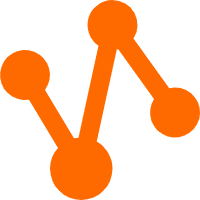 MaxCompute
MaxCompute
Conduct large-scale data warehousing with MaxCompute
Learn More AI Acceleration Solution
AI Acceleration Solution
Accelerate AI-driven business and AI model training and inference with Alibaba Cloud GPU technology
Learn More Offline Visual Intelligence Software Packages
Offline Visual Intelligence Software Packages
Offline SDKs for visual production, such as image segmentation, video segmentation, and character recognition, based on deep learning technologies developed by Alibaba Cloud.
Learn MoreMore Posts by Alibaba Cloud Native Community